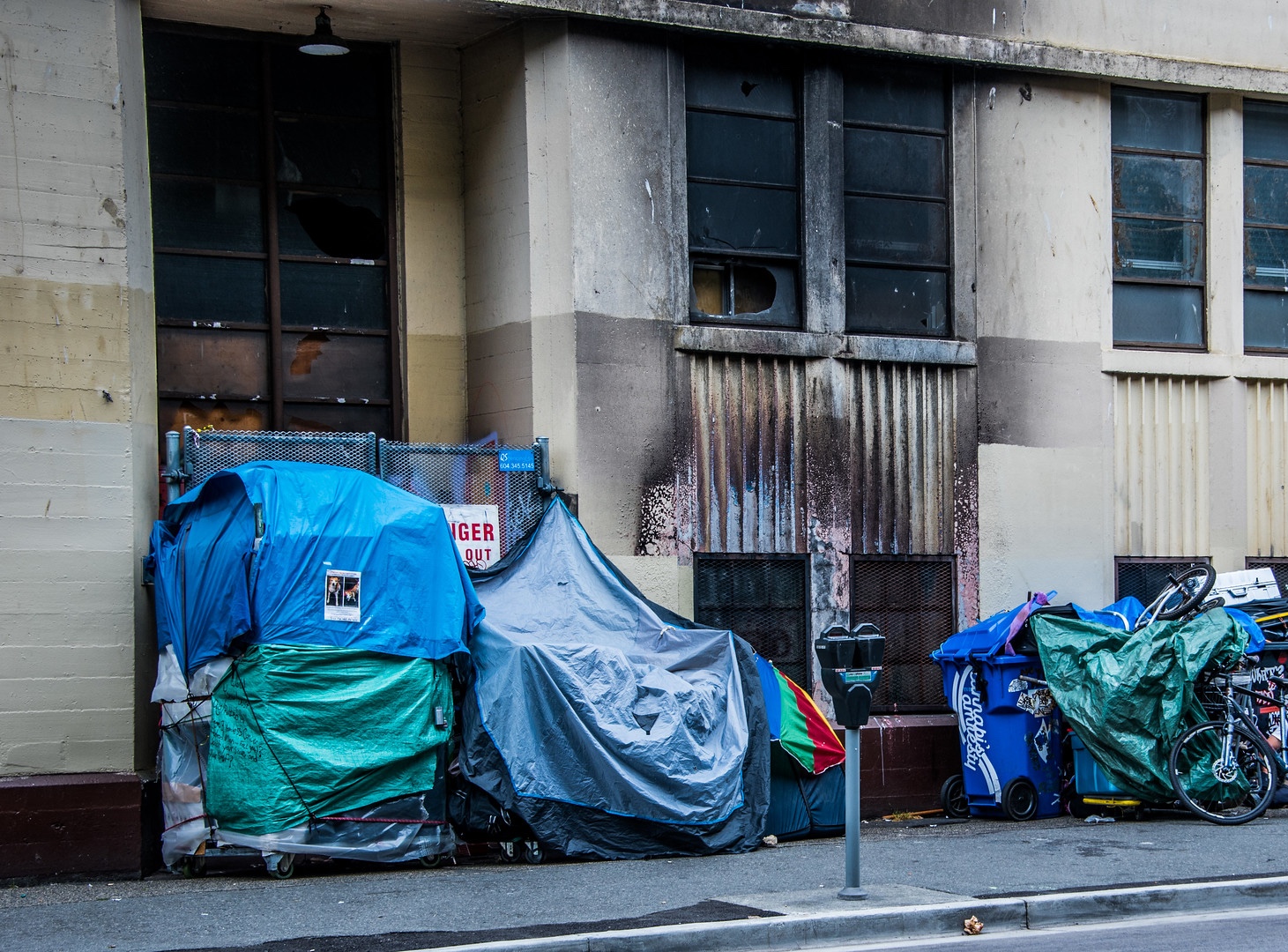In courtrooms and shelters across Canada, a hidden crisis unfolds. Gender-based violence traps hundreds of thousands of Canadian women in dangerous situations and economic precarity—not because they lack the courage or skills to escape, but because they lack the financial means.
With several provincial elections on the horizon and ongoing discussions about poverty reduction strategies, it’s time to shift the conversation. A Basic Income Guarantee (BIG) could transform our response to gender-based violence from crisis management to prevention. This is about more than just helping individual survivors; it’s about changing an economic system that makes violence profitable for abusers and impossible to escape for victims.
Economic Abuse as Social Control
Gender-based violence costs the Canadian economy $7.4 billion annually, according to the Department of Justice.
But this figure only captures spousal violence. When we include all forms of intimate partner violence, the cost approaches $12.7 billion—more than Canada’s last federal housing budget. Despite this massive economic impact, the financial strain of gender-based violence remains largely absent from policy discussions.
Economic abuse appears in approximately 99% of domestic violence cases, according to the National Network to End Domestic Violence, but it’s rarely discussed as a distinct form of violence requiring targeted intervention. This oversight has profound consequences. Statistics Canada’s 2019 Survey on Safety in Public and Private Spaces found that 44% of Canadian women have experienced intimate partner violence since age 15, yet 80% never report to police, in part due to economic barriers that make leaving seem impossible.
Case Study: How Economic Control Operates
The mechanics of economic abuse are sophisticated and systematic. Often, a partner begins by “helping” manage finances, gradually assuming control of all bank accounts. The abuser may then sabotage a victim’s employment by calling her workplace repeatedly, showing up unannounced, and creating conflicts that lead to termination.
Research by the Corporate Alliance to End Partner Violence shows that 74% of employed survivors face workplace harassment by their abuser, while 28% ultimately lose their jobs due to domestic violence-related interference. But the abuse doesn’t end there. Abusers systematically destroy credit scores, accumulate debt in their partner’s name, and create financial obligations that persist long after separation.
The average survivor leaves an abusive relationship carrying $20,000-$30,000 in coerced debt, facing damaged credit that affects their housing and employment for seven to ten years on average. In Vancouver’s rental market, where average rents exceed $2,200 monthly and landlords typically require credit scores above 650, this financial sabotage creates what researchers call “economic entrapment,” where leaving becomes practically impossible regardless of desire or determination.
Beyond the challenge of risking financial precarity, economic dependency also leads individuals to enter into dangerous living situations, relationships, or environments, a detail noted in correspondence with the Women’s Network of Prince Edward Island.
Reproducing the Problem
Canada’s provincial welfare systems were designed when domestic violence was considered a private matter. This means that these systems regularly fail survivors of economic abuse. The inadequacies aren’t accidental, but rather reflect policy choices that prioritize cost containment over human dignity and safety.
The Mathematics of Impossibility
Consider the basic math facing survivors across Canada:
- Ontario: Ontario Works provides $733 monthly for a single person. Average Toronto rent: $2,400 monthly. Monthly shortfall for housing alone: $1,667.
- British Columbia: Income assistance provides $560 monthly for a single person. Average Vancouver rent: $2,200 monthly. Monthly shortfall: $1,640.
- Alberta: Income support provides up to $842 monthly for a single person. Average Calgary rent: $1,400 monthly. Monthly shortfall: $558.
These figures don’t include food, transportation, childcare, or the additional costs survivors face: legal fees, counseling, security deposits, replacing belongings left behind, and often, relocation to different cities for safety.
For a survivor who has had their employment directly impacted by economic abuse, or who is simply recovering from an abusive relationship and unable to enter the workforce, income assistance is often the only viable option. But with rates falling so far behind actual economic needs, survivors regularly experience severe material poverty.
Enforcing Poverty
Provincial asset limits compound these challenges by preventing survivors from accumulating the savings necessary for independence.
Ontario’s $2,500 asset limit means survivors cannot save enough for first and last month’s rent plus a security deposit without losing their benefits. The resulting paradox: to maintain eligibility for inadequate support, survivors must remain too poor to escape poverty.
These asset limits also prevent survivors from owning reliable vehicles worth more than $15,000, creating transportation barriers that affect employment opportunities and access to services. In rural areas, where public transit is limited and domestic violence services are scarce, transportation restrictions can be life-threatening.
The Intersectional Dimension
The impact of economic abuse isn’t uniform across all populations. Certain groups face compounded vulnerabilities that make experiencing violence and recovering from it more challenging.
Indigenous Women: Colonial Economics and Contemporary Violence
Indigenous women experience intimate partner violence at rates 2.7 times higher than non-Indigenous women, while facing systemic economic barriers rooted in colonial policies. The median income for Indigenous women ($28,200) compared to non-Indigenous women ($38,800) highlights their vulnerability to economic abuse.
Remote Indigenous communities face additional barriers: 37% of First Nations reserves have no bank branch, according to the Assembly of First Nations, while food costs can soar up to 300% higher in northern communities. These structural inequalities intersect with intimate partner violence to create situations where leaving becomes economically impossible even when culturally appropriate support systems exist.
LGBTQ2S+ Communities: Identity as Economic Weapon
Sexual minority women experience intimate partner violence at rates 1.8 times higher than heterosexual women, while facing unique forms of economic control. Abusers threaten “outing” to employers in jurisdictions without comprehensive anti-discrimination protections, or to family members who provide financial support.
Trans individuals face employment discrimination rates reaching 47%, creating economic vulnerabilities that abusers exploit. The 61% of LGBTQ2S+ survivors turned away from traditional shelters—often due to policies that exclude trans women or lack appropriate facilities—are forced to choose between unsafe housing and returning to abusive relationships.
Basic Income: A Structural Solution
Basic income represents a fundamental shift from Canada’s current means-tested, punitive welfare system, and towards what the Basic Income Canada Network calls “unconditional income security.” Within this transformation is the recognition that economic security is a human right, not something that must be earned through compliance with bureaucratic requirements that may conflict with safety needs.
Mandy Kay-Raining Bird from Coalition Canada notes that basic income responds to gender-based violence on two critical levels: prevention and mitigation.
For prevention, Kay-Raining Bird adds that, “having a BIG could reduce stress, hopelessness, and despair in families and potentially reduce violence that may result.” This is supported by research from David Calnitsky and Pilar Gonalons-Pons, which showed that violent crimes decreased with basic income implementation in the saturated Mincome site in Manitoba.
For mitigation, Kay-Raining Bird says that “a BIG that is administered nimbly so as to be available rapidly with changing circumstances could free women to leave abusive relationships and mitigate some of the impacts of economic abuse.”
The Five Pillars of Liberation
Basic income’s core principles directly address the mechanisms of economic abuse:
- Unconditional – No work requirements that conflict with safety planning or trauma recovery; no asset limits preventing survivors from saving for independence; no bureaucratic requirements that force repeated disclosure of intimate violence to untrained officials.
- Individual – Payments go directly to individuals, not households, breaking the economic dependencies that trap people with abusive partners. Current welfare systems often base benefits on household income, creating disincentives for survivors to live with supportive family or friends.
- Universal – Everyone receives it, eliminating the stigma of means-tested “welfare” and the complex eligibility determinations that can delay access to support for weeks or months. These delays can be fatal for people fleeing violence.
- Regular – Predictable monthly payments enable planning and stability. Unlike emergency funds or crisis supports, regular income allows survivors to make long-term decisions about housing, education, and employment based on their needs rather than program requirements.
- Sufficient – Amounts must be adequate not just for survival, but for genuine independence—including the costs of housing deposits, legal fees, counseling, and rebuilding that characterize recovery from economic abuse.
The Canadian Opportunity
Canada is uniquely positioned to lead on basic income implementation for survivors. The COVID-19 pandemic demonstrated administrative feasibility through programs like the Canadian Emergency Relief Benefit (CERB), while federal-provincial cost-sharing agreements for healthcare provide a constitutional framework for national standards with provincial flexibility. While many of Canada’s national and provincial systems are being re-evaluated for efficacy, this is a unique moment where once-radical ideas like BIG can make a sustained impact.
However, implementing basic income for gender justice still faces significant obstacles. Kay-Raining Bird says common misconceptions could hinder adoption: the persistent myths that “people won’t work, it is too expensive, it causes inflation,” and the harmful “deserving/undeserving rhetoric.”
She further emphasizes the fundamental political tension between “equity, human rights, and justice” and “corporate and market interests, the military, big oil, and the wealthy.” Basic income, she reminds us, threatens the very power structures that benefit from economic desperation.
Current Political Momentum
Recent developments suggest growing political openness to basic income experimentation:
- Prince Edward Island released a completed formal basic income feasibility study and proposal in November 2023 and is now considering pilot implementation in collaboration with the federal government.
- British Columbia continues to reference its expert panel’s recommendation for targeted basic income for women fleeing violence in current policy discussions.
- Federal Parliamentary Committees have repeatedly recommended basic income pilots for vulnerable populations, with renewed interest following recent committee hearings.
- Municipal governments in Toronto, Vancouver, and Calgary continue to advocate for basic income research and implementation.
This momentum is supported by emerging international evidence. Kay-Raining Bird points to several pilots in the United States designed specifically for pregnant women, including programs in the San Francisco Bay Area, Philadelphia, and New Mexico. The California pilot provides direct evidence of how basic income can improve safety outcomes for women in vulnerable situations, offering a model for Canadian implementation.
Upcoming provincial and municipal elections will provide opportunities to make basic income a central policy issue, particularly as parties and candidates seek to differentiate themselves on approaches to poverty reduction and gender equality. The ongoing housing crisis has made the economic barriers facing survivors even more urgent.
Policy Framework
Implementing basic income for survivors requires incorporating safety and privacy protections that go beyond standard social program delivery:
- Safe Payment Systems: These must include options for directing payments to trusted third parties (lawyers, anti-violence organizations) when direct receipt isn’t safe, and the ability to change payment methods and addresses instantly when safety situations change.
- Privacy Protections: We must prevent abusers from accessing information about survivors’ benefit eligibility through freedom of information requests or court proceedings. Individual payments reduce risks compared to household-based systems.
- Financial Inclusion: Partnerships can be established with credit unions and alternative financial service providers for survivors excluded from traditional banking due to damaged credit. Prepaid debit cards and mobile banking solutions can be offered to those without bank accounts.
- Sufficient Amounts: For survivors specifically, basic income must cover not just basic needs but the genuine costs of establishing independence: housing deposits, legal fees, counseling, relocation, and rebuilding costs that can reach $50,000 or more in major metropolitan areas.
Practical Solutions
The evidence is clear: gender-based violence has deep economic roots that traditional crisis responses alone do not address. Economic abuse is both a tool of control and a barrier to safety, creating cycles that trap women in dangerous situations while costing the Canadian economy billions annually.
As Canada grapples with an affordability crisis and provinces reconsider their approach to poverty reduction, basic income offers an evidence-based preventative policy solution that addresses root causes, not just consequences. The urgency of compounded housing and cost-of-living crises has made the economic barriers facing survivors even more insurmountable over the past several years.
Survivors themselves are often leading the calls for BIG. One testimony from the Women’s Network of PEI put the importance of BIG succinctly:
“I never worked at a place that has a pension program. I never had enough money to put money in RRSPs because I was giving all my money to pay the bills, but he has a pension, he has a great pension, and I said to my lawyer, ‘you know what, he loves his money and to make this as easy for me, I don’t want any of it’. Women are put in financially precarious situations just to get away from that, and without this type of a program (BIG), women are going to live in poverty for the rest of our lives.”
The Choice Ahead
As the affordability crisis deepens and inequality widens, basic income for survivors isn’t just good policy, but a pillar of the society we want to build. One that treats economic security as a human right, that recognizes the connections between individual violence and systemic inequality, and that chooses prevention over punishment.
For the hundreds of thousands of people currently facing the impossible choice between poverty and violence, this policy decision could be the difference between survival and liberation. The evidence is clear, the need is urgent, and the solutions are available. What we need now is the political will to act.





